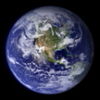What is causing the what looks like camera shake on the moon
May 23, 2014 12:22:42 #
Jay Pat wrote:
I'm going with camera shake.
The mountains don't slow it but, they are a lot darker (not sure if that is a valid point).
I would think if it was moon movement, the "shadow" would have been brighter (not as bright) and the opposite side of the moon would have been equally "lighter".
Also, with the lens at 400mm, I would have "started" with Shutter at 400
ISO at 400
Adjust f stop.
Pat
Snap Shot Guy!
The mountains don't slow it but, they are a lot darker (not sure if that is a valid point).
I would think if it was moon movement, the "shadow" would have been brighter (not as bright) and the opposite side of the moon would have been equally "lighter".
Also, with the lens at 400mm, I would have "started" with Shutter at 400
ISO at 400
Adjust f stop.
Pat
Snap Shot Guy!
If I had shot at 400 I would have had to have a wide open aperture, which would have hurt my DOF. I actually did try a few, but only the ones of just the sun were worth keeping. The ones with the foreground were not sharp.
May 23, 2014 17:23:41 #
Country's Mama wrote:
I took several images of this scene and many of them have what looks like camera shake around the moon. I was not using a remote release and the wind was wicked, but the formations don't seem to have the same problem.
Contrary to what I wrote earlier, forget movement of the moon. I've been looking at some pictures of the moon, and all of them that show movement, show the moon rising from bottom left to top right. That is contrary to what your photo shows.
I've got my husband do some calculations just now, if he hasn't forgotten his high-school math. I can't do it because I never learned this, but:
The angle of view of the mountains is exactly the same as the angle of view of the moon with the surrounding sky. However, because the mountains are so much closer the actual distance from side-to-side in the picture is much, much less than the actual distance from side-to-side at the distance the moon is. So, even with just a hint of camera shake, one spot of the lens travels through a much longer path of the distance than it does through a path across the nearby mountains. Therefore camera shake is visible on the moon but not on the mountains.
And if my reasoning is wrong, someone please convince me it is wrong and why. Looks like it will be a while for my husband to figure out the math.
May 23, 2014 18:02:06 #
Country's Mama wrote:
That would have been so neat. Why don't I think of these things when I have the chance to do them. But it was lucky that I got what I did as we were giving up on the moon ever rising and heading back.
I suspect the moon will be out again.
May 23, 2014 19:15:13 #
jerryc41 wrote:
I suspect the moon will be out again.
But it might be awhile before I am in the Badlands again. I suspect that the movement is from either activating the shutter or the wind. Some pictures show it others do not which would support camera shake.
May 23, 2014 20:39:19 #
At 1.6 Seconds, the Rule of 500 may help.
From http://www.davidkinghamphotography.com/blog/2012/11/how-to-avoid-star-trails
500 Rule: 500 divided by the focal length of your lens = the longest exposure before stars start to trail or blur (in seconds)
The Exif Data -
User Comment: ...
Exposure Time: 1.6
F Number: f / 16
Exposure Program: Manual
ISO Speed Ratings: 200
Aperture Value: 8
Metering Mode: Spot
White Balance: Manual white balance
Light Source: Cloudy weather
Flash: Flash did not fire
Focal Length: 400mm
Focal Length In 35mm Film: 600mm
Model: NIKON D200
Software: Adobe Photoshop Elements 11.0 Macintosh
Lens: 400.0 mm f/5.6
DateCreated: 2014-05-14T21:27:40.032
From http://www.davidkinghamphotography.com/blog/2012/11/how-to-avoid-star-trails
500 Rule: 500 divided by the focal length of your lens = the longest exposure before stars start to trail or blur (in seconds)
The Exif Data -
User Comment: ...
Exposure Time: 1.6
F Number: f / 16
Exposure Program: Manual
ISO Speed Ratings: 200
Aperture Value: 8
Metering Mode: Spot
White Balance: Manual white balance
Light Source: Cloudy weather
Flash: Flash did not fire
Focal Length: 400mm
Focal Length In 35mm Film: 600mm
Model: NIKON D200
Software: Adobe Photoshop Elements 11.0 Macintosh
Lens: 400.0 mm f/5.6
DateCreated: 2014-05-14T21:27:40.032
May 23, 2014 23:13:27 #
St3v3M wrote:
At 1.6 Seconds, the Rule of 500 may help. br br F... (show quote)
Interesting, thank you, and I will remember this, hopefully, for my next moon shots. I went back and looked at all the images from that night and I think it is camera shake, at least most of them, since the "flare" is in different positions in many of them. Or maybe it is a combination of both. Either way I know what to do differently.
May 23, 2014 23:23:24 #
Country's Mama wrote:
Interesting, thank you, and I will remember this, hopefully, for my next moon shots. I went back and looked at all the images from that night and I think it is camera shake, at least most of them, since the "flare" is in different positions in many of them. Or maybe it is a combination of both. Either way I know what to do differently.
We are what we learn.
May 24, 2014 05:22:57 #
Bill Houghton wrote:
I don't think it was any thing other then lens flare. If it had been motion of the moon you would have more blur where the two meet. Wondering if you had a filter on the like a UV or added glass of some kind. But that to me is a lens flare.
Its lens flare...I often get it on shots like this...sometimes as bad as another complete image of the moon....also you don't need a long exposure for the moon...I take mine at 1/160 or 1/320.
May 24, 2014 06:34:44 #
Morning Star wrote:
CM, Looking at the picture, I tend to agree with the others about the "moving moon".
But what about the little streak at the lower right, just above the horizon? And a small spot at the upper left...
Easy enough to work them away, but you want to be aware of them for photos where they should not be visible at all.
But what about the little streak at the lower right, just above the horizon? And a small spot at the upper left...
Easy enough to work them away, but you want to be aware of them for photos where they should not be visible at all.
That looks like dirt on he sensor. I had the same thing but got rid of it with an air duster. (hand squeeze type, NO canned air!
May 24, 2014 06:52:16 #
You might consider taking two different shots of the same scene, using tripod. One for exposure of the moon and one for exposure of the topography, and combine them in pp. I find the moon shots the sharpest at at least 1/250th of a second.
May 24, 2014 07:21:13 #
Wanda Krack wrote:
You might consider taking two different shots of the same scene, using tripod. One for exposure of the moon and one for exposure of the topography, and combine them in pp. I find the moon shots the sharpest at at least 1/250th of a second.
Wanda has the best advice.
Two things struck me when I first saw these photos. Was the moon really that red? (White balance issue.) And why are the hills so bright? The price you pay for exposing for the hills is that the moon will be overexposed and will have moved noticeably. Overexposing the moon could change its color balance.
As for your comment about depth of field, those hills are essentially at infinity so you could have used any f/stop. Just keep in mind that stopping down 2 stops will improve the optical sharpness. If you have a depth of field problem and use Wanda's two exposure advice, nothing says you have to use the same f/stop for both shots. Also, use your small spot exposure mode for the moon. All you exposed properly is the moon.
Now go and try this will your own sky.
May 24, 2014 08:20:49 #
I've had good luck using the 2 second delay might give it a try, works great with wildlife using a long lens. Good luck.
May 24, 2014 08:38:19 #
ggttc wrote:
Its lens flare...I often get it on shots like this...sometimes as bad as another complete image of the moon....also you don't need a long exposure for the moon...I take mine at 1/160 or 1/320.
Thank you for commenting.
May 24, 2014 08:41:01 #
Wanda Krack wrote:
You might consider taking two different shots of the same scene, using tripod. One for exposure of the moon and one for exposure of the topography, and combine them in pp. I find the moon shots the sharpest at at least 1/250th of a second.
I did take a lot at different exposures. I was on a tripod, but the wind was blowing briskly. I will have to go back through and see what I can come up with.
May 24, 2014 09:26:38 #
Country's Mama wrote:
I took several images of this scene and many of them have what looks like camera shake around the moon. I was not using a remote release and the wind was wicked, but the formations don't seem to have the same problem.
Not camera shake but due to the moon moving
"To keep the moon from moving more than 1 pixel during your exposure with the moon just filling the frame, use a shutter speed of 1/15 sec or faster.
A shutter speed of 1/100 sec will freeze the moon's motion at all but telescopic magnifications."
If you want to reply, then register here. Registration is free and your account is created instantly, so you can post right away.








